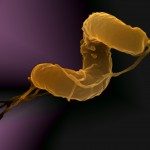Link to Pubmed [PMID] – 28254676
J Proteomics 2018 01;171:53-62
Extracting information from peptidomics data is a major current challenge, as endogenous peptides can result from the activity of multiple enzymes. Proteolytic enzymes can display overlapping or complementary specificity. The activity spectrum of human endogenous peptide-generating proteases is not fully known. Hence, the indirect study of proteolytic enzymes through the analysis of its substrates is largely hampered. Antimicrobial peptides (AMPs) represent a primordial set of immune defense molecules generated by proteolytic cleavage of precursor proteins. These peptides can be modulated by host and microorganismal stimuli, which both dictate proteolytic enzymes’ expression and activity. Peptidomics is an attractive approach to identify peptides with a biological role and to assess proteolytic activity. However, bioinformatics tools to deal with peptidomics data are lacking. PROTEASIX is an excellent choice for the prediction of AMPs-generating proteases based on the reconstitution of a substrate’s cleavage sites and the crossing of such information with known proteases’ specificity retrieved by several publicly available databases. Therefore, the focus of the present tutorial is to explore the potential of PROTEASIX when gather information concerning proteases involved in the generation of human AMPs and to teach the user how to make the most out of peptidomics results using PROTEASIX.
SIGNIFICANCE: This tutorial provides a step-by-step guide on to use PROTEASIX for making sense and unveiling the biological implications of peptidomics data. In addition to its educational focus, this work also reveals which proteases contribute the most to the formation of human antimicrobial peptides distributed throughout body fluids in human defense barriers.

